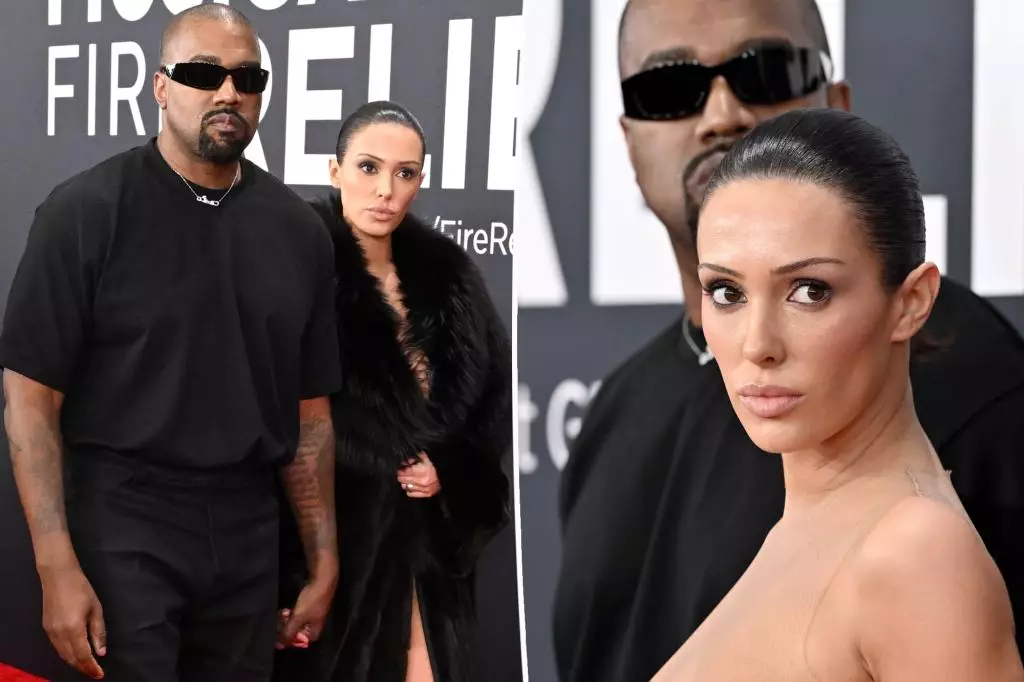In the realm of music, few figures generate as much buzz as Kanye West, and his appearance at the recent Grammy Awards with wife Bianca Censori has further solidified his penchant for controversy. Days after the awards, footage surfaced of West casually boasting to paparazzi that he and Censori had “beat the Grammys.” This comment, filled with characteristic bravado, epitomizes his refusal to conform to typical boundaries expected at such prestigious events.
Dressed in matching black Prada sunglasses, West and Censori made their way into a Los Angeles recording studio, with the rapper entertaining photographers with his gilded rhetoric. Earlier in the day, he took to Instagram, proudly breaking down Censori’s prowess as the “most Googled person on the planet,” reflecting on the massive interest generated by Censori’s audacious wardrobe choice that evening: a completely sheer dress that turned heads—and raised eyebrows—at the awards show.
Censori’s entrance at the Grammys certainly did not go unnoticed. Initially cloaked in a long black fur coat, she dramatically dropped the outer layer to reveal an “invisible dress” that left little to the imagination. This bold fashion choice led to a flurry of discussions online, igniting a mixture of intrigue and criticism. Notably, photographer Chiara Glionna referred to the display as a “deeply unsettling” exhibit of power dynamics, suggesting that the provocative concept of a naked woman in the spotlight is a calculated yet troubling tactic employed by men in the industry.
Although Glionna’s comment catalyzed a discussion on social media, it also caught the attention of West, who was quick to defend the flashy display, mocking the critique as he shared the screen capture with his followers. This back-and-forth underscores the ongoing tension between artistic expression and societal norms, raising questions about the implications of such displays and the perceptions they create.
While many might view Censori and West’s antics as simply part of showbiz, it’s evident that not everyone shares in this indulgent perspective. Despite the backlash, which included calls for accountability and critiques of objectification, Censori faced no legal repercussions for her outfit—an indicator of the blurred lines between art, performance, and public reaction in today’s celebrity culture.
Critics argue that these spectacles, while eye-catching, reinforce harmful stereotypes and contribute to the systematic objectification of women in the industry, a sentiment echoed in various online discourses. Yet, as evidenced by LAPD sources confirming no formal complaints were made regarding the revealing dress, it appears that controversy, in this case, fosters more notoriety than consequence.
In true Kanye fashion, the attention garnered from this stunt was not wasted. The rapper cleverly seized the moment to promote his latest Yzy designs, which included another bold outfit worn by Censori at a Grammys afterparty—a sheer thong bodysuit that extended the narrative of their unapologetically provocative public persona. By intertwining fashion innovation with sociocultural commentary, West continues to craft a brand that thrives on the edge of mainstream acceptability, blending artistry with a fascination for the outrageous.
Kanye West and Bianca Censori’s appearance at the Grammy Awards serves as a microcosm of contemporary celebrity culture, one where the boundaries of art, fashion, and societal expectations are continually redefined. Their actions invite scrutiny and foster dialogue, symbolizing the complex relationship between celebrity antics and audience perception in an entertainment landscape that thrives on shock value and sensationalism.

